Related Research Articles
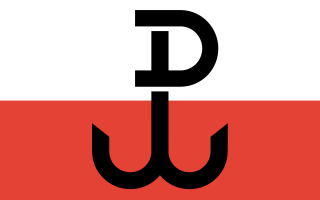
The Home Army was the dominant Polish resistance movement in Poland, occupied by Nazi Germany and the Soviet Union, during World War II. The Home Army was formed in February 1942 from the Związek Walki Zbrojnej. Some authors stress the continuity using acronym ZWZ/AK. Over the next two years, it absorbed most other Polish underground forces. Its allegiance was to the Polish government-in-exile, and it constituted the armed wing of what became known as the "Polish Underground State".
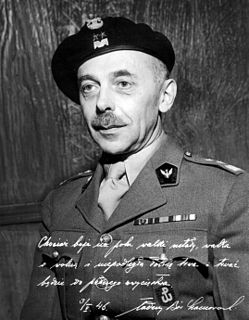
General Tadeusz Komorowski, better known by the name Bór-Komorowski was a Polish military leader. He was appointed commander in chief a day before the capitulation of the Warsaw uprising and following World War II, 32nd Prime Minister of Poland, 3rd Polish government-in-exile in London.

The Warsaw Uprising was a major World War II operation, in the summer of 1944, by the Polish underground resistance, led by the Home Army, to liberate Warsaw from German occupation. The uprising was timed to coincide with the retreat of the German forces from Poland ahead of the Soviet advance. While approaching the eastern suburbs of the city, the Red Army temporarily halted combat operations, enabling the Germans to regroup and defeat the Polish resistance and to raze the city in reprisal. The Uprising was fought for 63 days with little outside support. It was the single largest military effort taken by any European resistance movement during World War II.

Operation Tempest was a series of anti-Nazi uprisings conducted during World War II by the Polish Home Army, the dominant force in the Polish resistance.

The Warsaw Uprising occurred at a stage of the Second World War when it was becoming clear that Nazi Germany was likely to lose. The Uprising ended in capitulation, the deaths of over 250,000 civilians, and only 15% of Warsaw intact; with the benefit of hindsight, many people have argued that it should never have been started. Others have argued that it was inevitable and even crucial for Poland to prove its commitment to the Allied cause. Although Stalin was later to describe it as a "criminal enterprise," just two days prior to its initiation, Radio Moscow had called for the Polish people to rise in arms.

The Warsaw Uprising of 1944 was ended through a capitulation agreement which guaranteed not only the rights of the resistance to be treated as Prisoners of War but also was designed to guarantee the fair treatment of the civilians living in Warsaw. This agreement, between General Tadeusz Bór-Komorowski and General Erich von dem Bach, which had taken a long period of on and off negotiations to achieve.

The Monuments to the Warsaw Uprising were first established in Warsaw in the 1970s. Prior to that, there were only monuments to the Red Army soldiers and the Armia Ludowa soldiers. The role of the latter in the city fights in 1944 was exaggerated and overrated. Most of the victims of the Uprising who were buried in graves all over the city were later exhumed and buried in mass graves far away from the city centre, with a small concrete monument to "the victims of the war with Nazism". No mention of the Uprising was allowed.

In the German language, Festung Warschau is the term used to refer to a fortified and well-defended Warsaw. In the 20th century, the term was in use on three occasions during World War I and World War II. It was used when the Germans threw back the Russian advance in 1914, where Warsaw came within distance of the fighting in October. The term resurfaced during the September 1939 German invasion of Poland. Later in the second war, the term resurfaced between September 1944 and January 1945, when the retreating Germans tried to establish a defense in the city against the advancing Soviet Union.
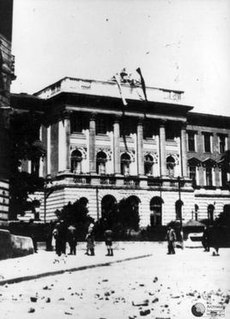
The Lwów uprising was an armed insurrection by the Home Army underground forces of the Polish resistance movement in World War II against the Nazi German occupation of the city of Lwów in the latter stages of World War II. It began on July 23, 1944 as part of a secret plan to launch the countrywide all-national uprising codenamed Operation Tempest ahead of the Soviet advance on the Eastern Front. The Lwów uprising lasted until July 27 and resulted in the liberation of the city. However, shortly afterwards the Polish soldiers were arrested by the invading Soviets. Some were forced to join the Red Army, others sent to the Gulag camps. The city itself was occupied by the Soviet Union.

Biuletyn Informacyjny was a Polish underground weekly published covertly in General Government territory of occupied Poland during World War II. The magazine was edited by Aleksander Kamiński and distributed as the main organ of ZWZ-AK headquarters in Warsaw, initially in order to inform the AK soldier about ongoing resistance activities. By 1944 Biuletyn Informacyjny had a circulation of 42,000-43,000 copies. The publishers recommended readers to have the articles reprinted in provincial underground publications throughout Poland.

Jan Nowak-Jeziorański was a Polish journalist, writer, politician, social worker and patriot. He served during the Second World War as one of the most notable resistance fighters of the Home Army. He is best remembered for his work as an emissary shuttling between the commanders of the Home Army and the Polish Government in Exile in London and other Allied governments which gained him the nickname "Courier from Warsaw", and for his participation in the Warsaw Uprising. After the war he worked as the head of the Polish section of Radio Free Europe, and later as a security advisor to the US presidents Ronald Reagan and Jimmy Carter.

Zygmunt Henryk Berling was a Polish general and politician. He fought for the independence of Poland in the early 20th century. Berling was a co-founder and commander of the First Polish Army and thus of the communist-led Polish People's Army, which fought on the Eastern Front of World War II.

The Polish Committee of National Liberation, also known as the Lublin Committee, was an executive governing authority established by the communists in Poland at the later stage of World War II. It was officially proclaimed on 22 July 1944 in Chełm, installed on 26 July in Lublin and placed formally under the direction of the State National Council. The PKWN was a provisional entity functioning in opposition to the London based Polish government-in-exile, the internationally recognized government of Poland. The PKWN exercised control over Polish territory retaken from Nazi Germany by the Soviet Red Army and the Polish People's Army. It was sponsored and controlled by the Soviet Union and dominated by Polish communists.
Resistance movements during World War II occurred in every occupied country by a variety of means, ranging from non-cooperation to propaganda to hiding crashed pilots and even to outright warfare and the recapturing of towns. In many countries, resistance movements were sometimes also referred to as The Underground.

The Polish resistance movement in World War II, with the Polish Home Army at its forefront, was the largest underground resistance movement in all of occupied Europe, covering both German and Soviet zones of occupation. The Polish resistance is most notable for disrupting German supply lines to the Eastern Front, providing military intelligence to the British, and for saving more Jewish lives in the Holocaust than any other Western Allied organization or government. It was a part of the Polish Underground State.

Tadeusz Żenczykowski, pseudonym "Kania", "Kowalik" and "Zawadzki" was a Polish lawyer, political activist and soldier in the Armia Krajowa during World War II, taking part in the Warsaw Uprising of 1944. Immediately after the war, he was a member of the anti-communist conspiracy in Poland. In 1945, he emigrated and became a journalist and deputy chief of the Polish Section of Radio Free Europe, historian and publicist.
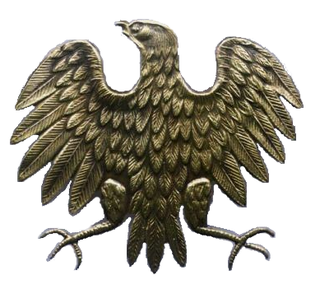
Polish Armed Forces in the East refers to Polish military forces established in the Soviet Union during World War II.

John Ward, MC, was a Flight Lieutenant in the Royal Air Force decorated twice for bravery. During World War II he was a member of a bomber crew shot down and taken POW but escaped and served as a BBC war correspondent behind enemy lines and fought with the Polish resistance Armia Krajowa participating in the Warsaw Uprising in occupied Poland being wounded in action against the SS controlled German forces.

Communist propaganda played an important role in the Polish People's Republic, one of the largest and most important satellite states of the Soviet Union following WWII. Together with the use of force and terror it was instrumental in keeping the country's communist government in power and was designed to shape Polish society into a communist one.
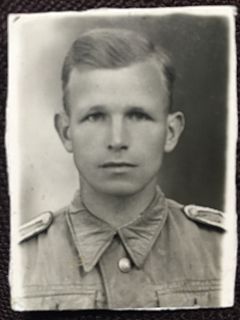
Ryszard Feliks Piotrowski, born in Warsaw, was a Major in the Polish Armed Forces and a member of the Polish resistance / Home Army. He fought in the "Sowinski" Battalion, "Waligora" Grouping, under his wartime code name Piorun.
References
- ↑ Anders, Władysław. Bez ostatniego rozdziału: wspomnienia z lat 1939-1946, Gryf Publications, 1981. Page 194. (in Polish)
- ↑ Steczkowski, Jan Zagroba. "Rok 1944 - między Bugiem a Wisłą", retrieved on August 9, 2008. (in Polish)
| This article about a radio station in Europe is a stub. You can help Wikipedia by expanding it. |
| This World War II article is a stub. You can help Wikipedia by expanding it. |